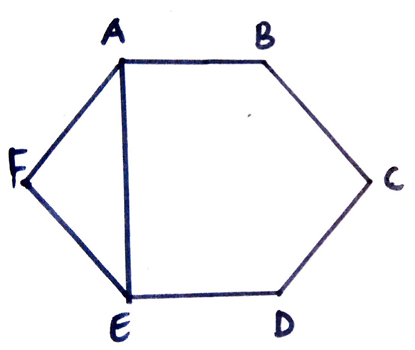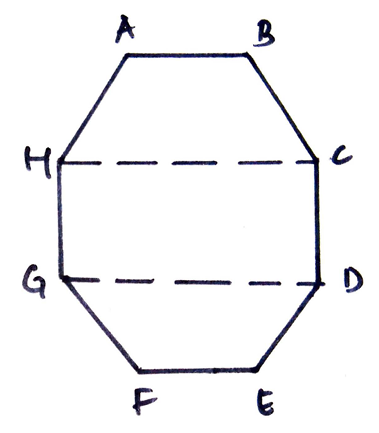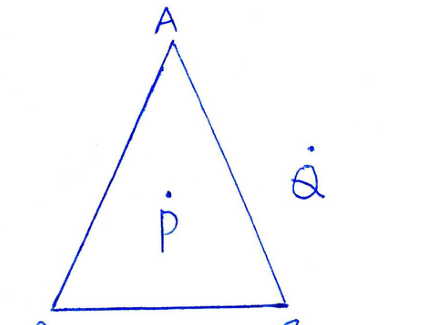Polygon, Quadrilateral, Rhombus, Octagon, Pentagon, Hexagon, Name each polygon, Chapter 5 – Understanding Elementary Shapes – Exercise 5.8 Solutions for class 6 CBSE, Stepwise Solutions for NCERT Class 6 Mathematics Chapter 5 – Understanding Elementary Shapes – Exercise 5.8, Class 6th Maths solutions Wikipedia, Questions and Answers for NCERT Mathematics Class 6, Questions and Solutions for NCERT Mathematics Class Sixth Exercise 5.8 of Chapter 5, CBSE Class sixth Maths Solutions, Questions and Solutions for NCERT Class 6th Mathematics Chapter 5 – Understanding Elementary Shapes – Exercise 5.8, Detailed Solutions for NCERT Class 6th Mathematics Chapter 5 – Understanding Elementary Shapes – Exercise 5.8, Questions and Solutions for NCERT Class 6 Mathematics Chapter 5 – Understanding Elementary Shapes – Exercise 5.8, Stepwise Solutions for NCERT Class 6 Mathematics Exercise 5.8, Solutions for NCERT Class 6 Mathematics Chapter 5, Stepwise and detailed solutions for NCERT Class 6 Chapter 5 Exercise 5.8, Detailed Solutions for Solutions for NCERT Class 6 Mathematics, NCERT Class 6th Mathematics Chapter 5 – Understanding Elementary Shapes – Exercise 5.8, Chapter 5 – Understanding Elementary Shapes – Exercise 5.8 NCERT Solutions.
Questions and Solutions for NCERT Class 6th Mathematics Chapter 5 – Understanding Elementary Shapes – Exercise 5.8
1. Examine whether the following are polygons. If any one among them is not, say why?

Answers:
(a) Since it is not a closed figure, it is not a polygon.
(b) It is a polygon because it is closed by line segments.
(c) It is a circle and not a polygon because it is not made by line segments.
(d) I is not a polygon because it is not entirely made by line segments.
2. Name each polygon. Make two more examples of each of these.

Answers:
(a) Quadrilateral
(b) Triangle
(c) Pentagon
(d) Octagon
3. Draw a rough sketch of a regular hexagon. Connecting any three of its vertices, draw a triangle. Identify the type of the triangle you have drawn.
Answer: ABCDEF is a regular Hexagon and AEF is a triangle formed by joining vertices A, E and F.

4. Draw a rough sketch of a regular octagon. (Use squared paper if you wish). Draw a rectangle by joining exactly four of the vertices of the octagon.
Answer: ABCDEFGH is a regular octagon and CDGH is a rectangle formed by joining vertices C, D, G and H.

5. A diagonal is a line segment that joins any two vertices of the polygon and is not a side of the polygon. Draw a rough sketch of a pentagon and draw its diagonals.
Answer: ABCDE is a Pentagon and AD, AC, BE and BD are its diagonals.

You can find the solutions for Class 6 Mathematics previous exercises from here
- Understanding Elementary Shapes – Exercise 5.7
- Chapter 5 – Understanding Elementary Shapes – Exercise 5.6
- Understanding Elementary Shapes – Exercise 5.5
- Chapter 5 – Understanding Elementary Shapes – Exercise 5.4
- Understanding Elementary Shapes – Exercise 5.3
- Chapter 5 – Understanding Elementary Shapes – Exercise 5.2
- Understanding Elementary Shapes – Exercise 5.1
- Chapter Basic Geometrical Ideas – Exercise 4.6 Solutions
- Basic Geometrical Ideas – Exercise 4.5 Solutions
- Chapter 4 Basic Geometrical Ideas – Exercise 4.4 Solutions
- Basic Geometrical Ideas – Exercise 4.3 Solutions
- Chapter 4 Basic Geometrical Ideas – Exercise 4.2 Solutions
- Basic Geometrical Ideas – Exercise 4.1 Solutions
- Playing with Numbers – Exercise 3.7 Solutions
- Chapter 3 Playing with Numbers – Exercise 3.6 Solutions
- Playing with Numbers – Exercise 3.5 Solutions
- Chapter 3 Playing with Numbers – Exercise 3.4 Solutions
- Playing with Numbers – Exercise 3.3 Solutions
- Chapter 3 Playing with Numbers – Exercise 3.2 Solutions
- Playing with Numbers – Exercise 3.1 Solutions
- Whole Numbers – Exercise 2.3 Solutions
- Chapter 2 Whole Numbers – Exercise 2.2 Solutions
- Whole Numbers – Exercise 2.1 Solutions
- Knowing Our Numbers Solutions Exercise 1.3 Solutions
- Chapter 1 Knowing Our Numbers Solutions Exercise 1.2 Solutions
- Knowing Our Numbers Solutions Exercise 1.1 Solutions

